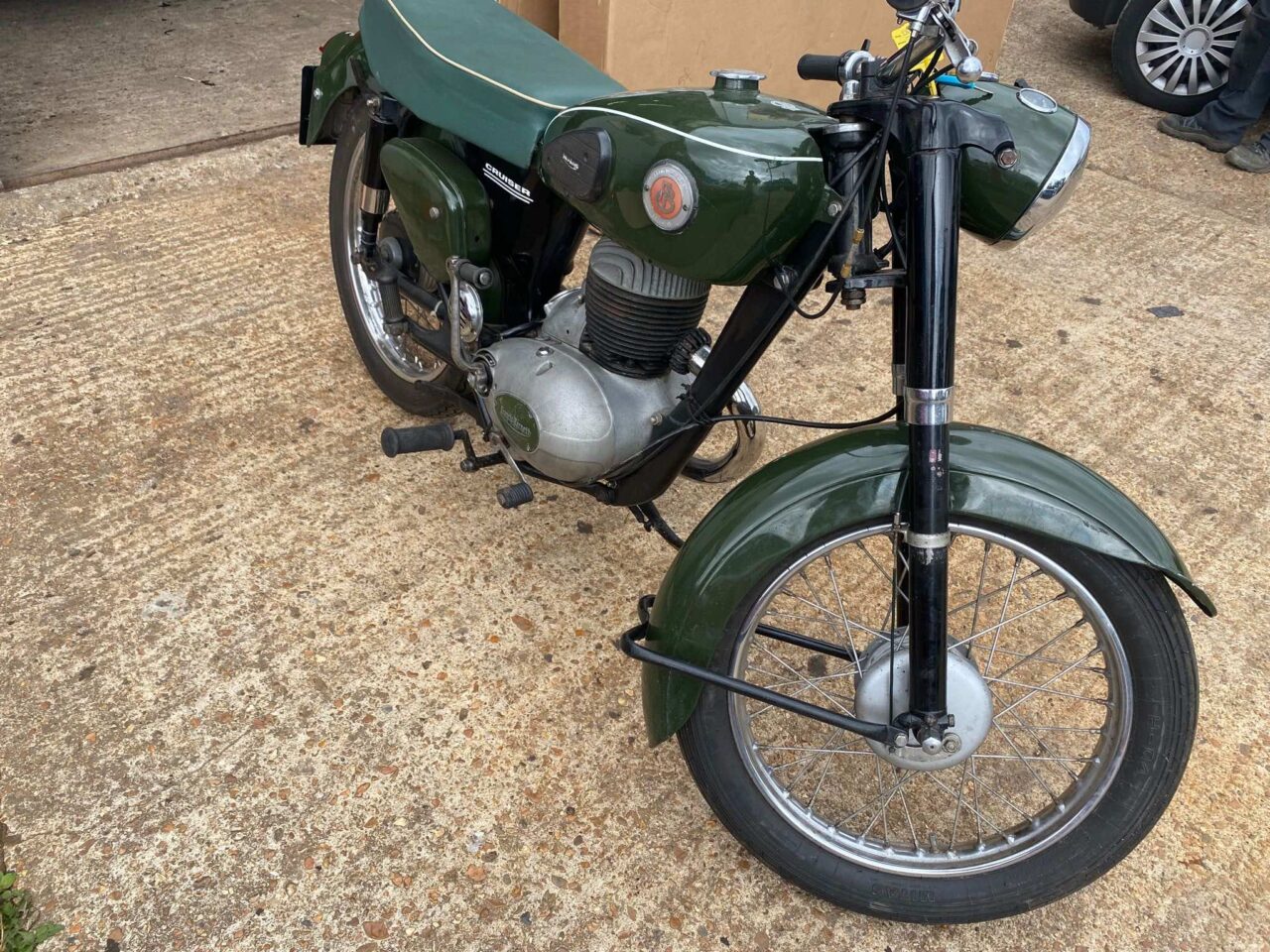
As the days grow shorter and temperatures begin to drop, classic motorcycle owners face a crucial task: preparing their beloved machines for the winter months ahead.
Proper winter preparation not only protects your bike from the harsh elements but also reduces the risk that something will go wrong during the colder weather. Here’s a comprehensive guide from the team at White’s Bodyworks to help you get your classic motorcycle winter-ready.
Before winter sets in, start by giving your motorcycle a thorough cleaning. Remove any dirt, grime, and road salt that may have accumulated over the riding season.
Use a gentle bike wash solution, avoiding harsh chemicals that could damage the paintwork. Pay special attention to hard-to-reach areas and under the fenders where debris can collect.
Once clean, inspect your motorcycle for any signs of wear or damage. Check the frame, forks, and swingarm for rust or corrosion. Look over the tyres for signs of cracking or uneven wear and ensure that they have adequate tread depth. Take note of any areas that may need repair or maintenance, as addressing these issues now can save you time and money later.
Changing the oil and filter is an essential step in winterising your classic motorcycle. Old oil can contain contaminants that may harm the engine over time, especially if left sitting for months.
Use the manufacturer-recommended oil type and make sure to replace the oil filter as well. This not only keeps your engine clean but also ensures that it has proper lubrication for those first rides in spring.
Before storing your motorcycle, it’s vital to address the fuel system. Fill the tank to prevent moisture from accumulating inside, which can lead to rust and corrosion. Adding a fuel stabiliser will help prevent the fuel from breaking down and causing starting issues come spring.
Be sure to run the engine for a few minutes after adding the stabiliser to ensure it circulates through the entire fuel system.
A fully charged battery is essential for your motorcycle’s performance, especially during winter months when temperatures can drop significantly. Remove the battery from the motorcycle and clean the terminals with a mixture of baking soda and water to prevent corrosion.
Store the battery in a cool, dry place and consider using a trickle charger or battery maintainer to keep it topped up throughout the winter.
If you prefer to leave the battery in the bike, ensure it is fully charged, especially if you are leaving it in storage. In cold temperatures, a weak battery may not have enough power to start the engine, so taking precautions now can save you a headache later.
Winter weather can be harsh on your classic motorcycle's exterior. To protect the paint and chrome, apply a coat of wax or polish to create a barrier against the elements. Consider using a breathable motorcycle cover to shield it from dust and moisture while still allowing air circulation to prevent condensation buildup.
If you park your motorcycle outside, invest in a high-quality waterproof cover that is specifically designed for motorcycles. This will help protect your bike from rain, snow, and ice, reducing the risk of rust and other weather-related damage.
Before winter storage, check your tyres for proper inflation, as cold temperatures can cause pressure to drop. Under-inflated tyres can lead to flat spots, which may be difficult to remedy in spring. If you plan to store your bike for an extended period, consider placing it on stands to elevate the tyres off the ground, preventing flat spots from forming.
Brakes are crucial for safety, and winter is an excellent time to ensure they are in top condition. Inspect the brake pads and discs for wear and check the brake fluid levels. If the fluid is dark or has absorbed moisture, consider flushing and replacing it to maintain braking performance.
Take your bike for a good ride to check if there are any problems. Listen for any unusual noises and check that all lights and signals are working. Once satisfied, find a suitable storage location—ideally, a dry, temperature-controlled environment.
If you don’t have access to a garage, choose a sheltered area away from direct exposure to the elements when your bike is parked up. Be sure to keep your motorcycle covered to protect it from dust and moisture.
Getting your classic motorcycle ready for winter may seem like a daunting task, but with careful preparation, you can protect your investment and ensure it remains in excellent condition.
By following these steps, you can enjoy peace of mind knowing that your bike is well cared for during the cold months. When spring arrives and the sun begins to shine again, you’ll be ready to hit the road on your classic motorcycle, fully prepared for another season of riding adventure.
Need help with servicing or repairs? The team at White’s Bodyworks is here to help. Contact us today to find out more.